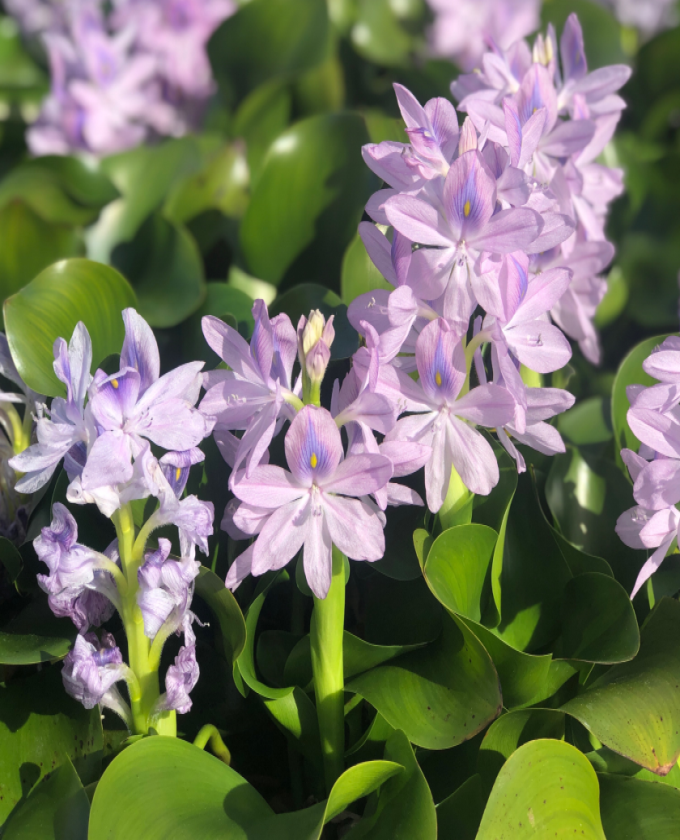| Eichhornia crassipes (Waterhyacinth) |

|

Wouldn't this be a lovely plant to have in your pond or lake?
Within weeks this lovely plant will grown out of control to the picture below.

Introduced in the late 1800’s as an ornamental, waterhyacinth, Eichhornia crassipes (Mart.) Solms, remains one of the world’s worst aquatic weeds despite an array of chemical, mechanical, and biological management options. Native to the Amazon Basin, this floating aquatic plant is found in 186 countries and territories around the world, and every continent, except Antarctica. This weed continues to be a problem in the southeastern and western regions of the US. One reason is the ability of plant to produce large numbers of seeds that can re-infest areas even after treatment with herbicides or die back over the winter in colder areas. In addition to producing seeds, this weed also reproduces vegetatively via clonal daughter plants that can help form dense mats that can block waterways, increase mosquito populations, induce anoxic conditions, and shade out native vegetation.
Although there are several generalist insects that feed on waterhyacinth, such as Samea multiplicalis (Guenée) (Lepidoptera: Crambidae) and Elophila obliteralis (Walker) (Lepidoptera: Crambidae), they do not control the plant. Classical biological control projects at the USDA-ARS Invasive Plant Research Laboratory in Ft. Lauderdale have developed four insects, namely Neochetina eichhorniae Warner (Coleoptera: Curculionidae), Neochetina bruchi Hustache (Coleoptera: Curculionidae), Niphograpta albiguttalis (Warren) (Lepidoptera: Crambidae), and Megamelus scutellaris Berg (Hemiptera: Delphacidae) which were released against waterhyacinth in 1972, 1974, 1977, and 2010, respectively, and have established on the plant in many areas. In Florida, the impact of these biological control agents have led to a 50-70% decline in biomass and a reduction of >90% in seed production. Despite this, coverage is still unacceptably high in many places in Florida.
Herbicides are the primary method for reducing the coverage of this weed and about $5 million are spent each year on their use for maintenance control programs. The Invasive Plant Research Laboratory has been investigating Integrated Pest Management (IPM) methods on waterhyacinth, combining chemical and biological control for this weed. One recent finding was that attack by biological control agents makes waterhyacinth more susceptible to herbicides.
In that study, the feeding by the biological control agents N. eichhorniae and M. scutellaris reduced waterhyacinth biomass by 15.2%, and herbicides alone reduced biomass by 29.2%. However, when biocontrol and chemical control were combined, biomass was reduced by 99.4%. Feeding by the insects likely weakened the plants to the point that even a reduced rate of herbicide was as effective as the currently used, higher operational rates. A simple logistic model predicted that the presence of the biological control insects will reduce the number of herbicide re-treatments from five in a year to just two, or a 60% reduction. In addition, the pattern of spraying may increase the effect of the insects by providing internal refuges within sprayed mats whereby insect attack would be more damaging to any remaining plants through increased densities as the insects move from sprayed to unsprayed plants.
There are a limited number of potential biological control agents in South America that await investigation and development. The Invasive Plant Research Laboratory has conducted waterhyacinth research in collaborations with the Foundation for the Study of Invasive (FUEDEI), formerly the USDA-ARS South American Biological Control Lab, located in Buenos Aires, Argentina.
Open links below for more information.
